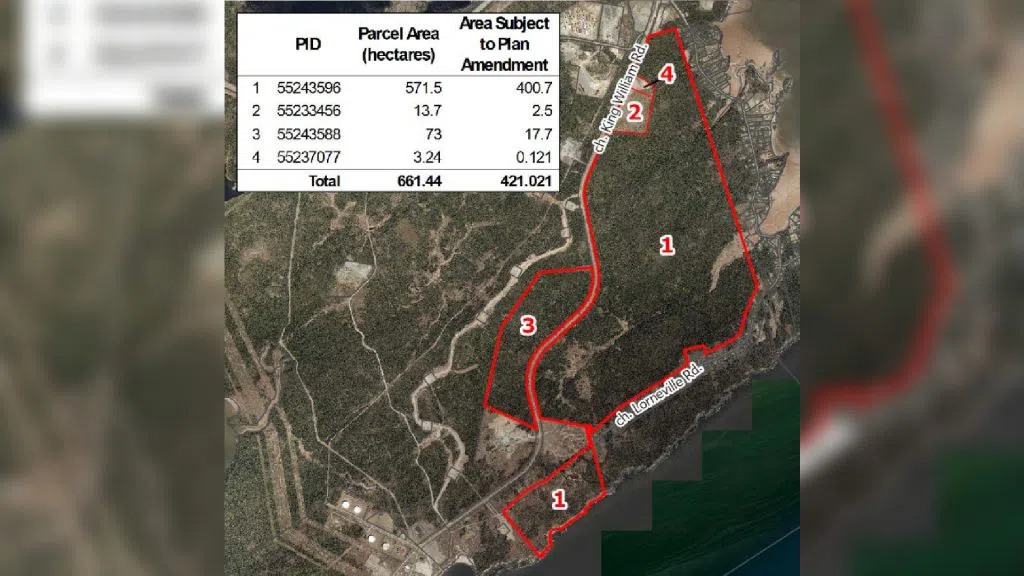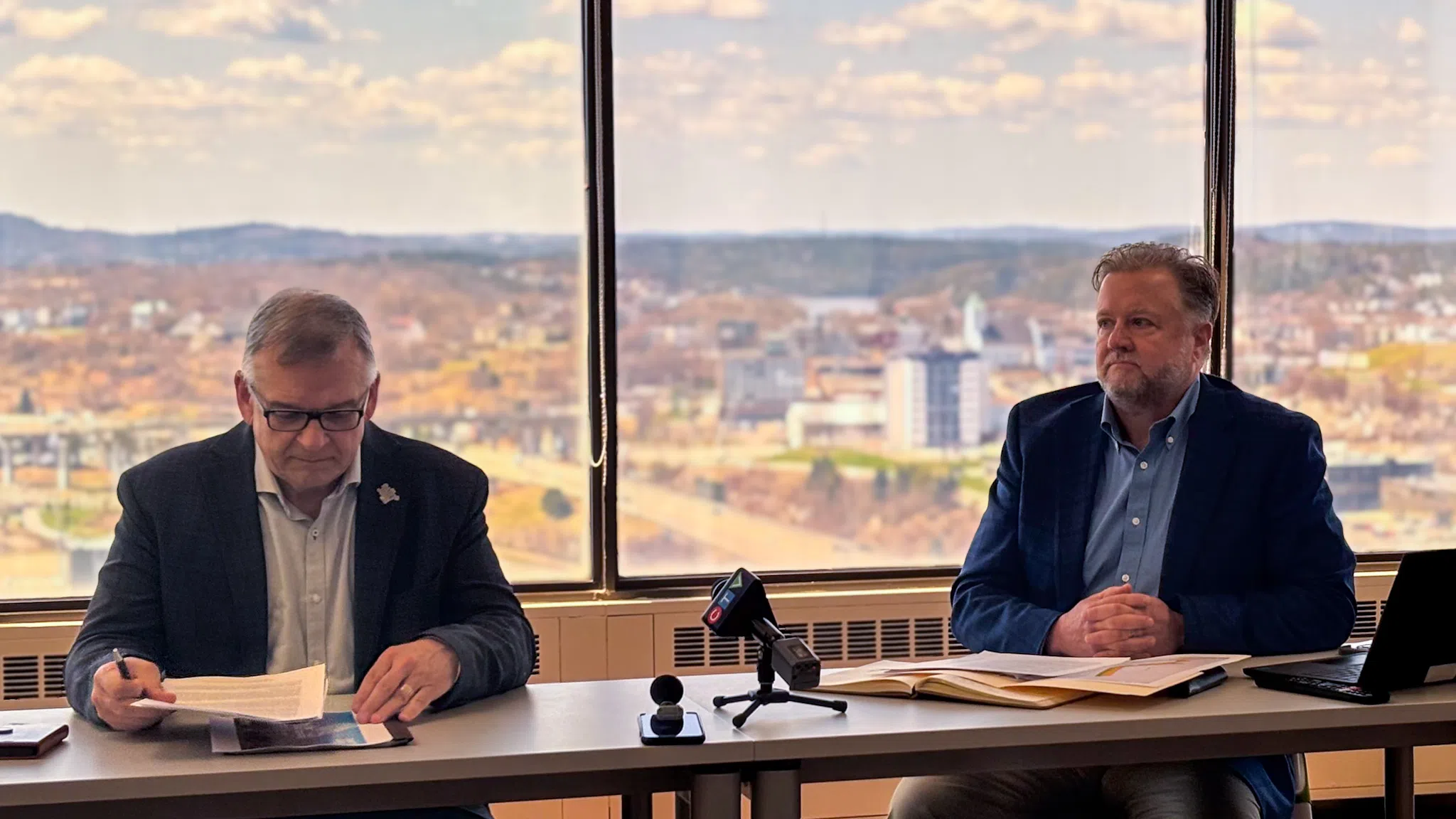Saint John is dealing with a significant shortage of development-ready industrial land.
That is why the city is proposing a controversial expansion of the Spruce Lake Industrial Park.
Officials met with reporters this week to make the case to add more than 1,500 acres to the park.
“This is a once-in-a-generation type of opportunity,” said Ian MacKinnon, the general manager of Saint John Industrial Parks.
“The parcels of land that are of interest range from 40 acres to 220 acres. The smallest parcel of land is larger than the available land that we have in our existing parks today, if it were all pushed together, and it’s not.”
The proposal first came before the city’s planning advisory committee and council several months ago.
But after hearing overwhelming opposition from residents in the Lorneville area, council directed city staff to create a task force to facilitate further discussions.
RELATED: Saint John launching task force on industrial park expansion plans
Staff have come back with an updated application, which includes larger setbacks from residential areas.
Industrial buildings must be at least 250 metres from residential property lines, while any uses considered volatile would have a 500-metre setback. There will also be a permanent natural treed buffer area of 150 metres.
In addition, only “non-emitting industries” — those without smokestacks — would be allowed. Several land uses would be prohibited, asphalt plants, petroleum refineries, metal shredding and scrap or salvage yards.
The city would also require professional risk assessments, which it says will ensure potential risks are either prevented or adequately mitigated.
“We have a significant interest in development here and it’s large. It’s in terms of billion-dollar construction and in the order of thousands of jobs,” said MacKinnon.
It includes clean energy, green energy, green manufacturing, data centres and warehouses, though officials declined to name any specific businesses.
Community concern
Despite the additional measures proposed by the city, residents in the area still have a lot of unease about the plan.
“How do we even put in conditions, how do we put in concerns to protect our safety if we don’t actually know what business is coming?” Adam Wilkins, co-chair of the group Save Lorneville, told our newsroom.
“We’re not against the economy, we’re not against development and jobs, but at what cost to the environment, what cost to the risk for people’s health and safety?”
Wilkins said he believes there would be less pushback from residents if the city took a step back and had more meaningful discussions.
He feels that the recent meetings held between residents and city staff were nothing more than window dressing.
“We really felt that there wasn’t any meaningful discussion to the level that is needed for such a project like this that has so many risks,” added Wilkins.

There is also concern within the community about the impact on wetlands and trees if the expansion does go ahead.
While there will be no development near the saltwater marsh estuaries, also called provincially significant wetlands (PSW), the city acknowledged there will be “limited impacts” to other wetlands and woodlands.
The city said the potential removal of any trees of filling of non-provincially significant wetlands “will only be done if there is a clear business case to do so.”
“It just seems like a process that’s being steamrolled through, maybe a little bit slower than it first started in the summer, but still being steamrolled through with no regard for the people that live in the area,” said Wilkins.
Andrew Beckett, the CEO of regional growth agency Envision Saint John, said he understands that residents have concerns.
But Beckett said he believes the businesses interested in developing there would be good corporate citizens.
“We need economic growth to sustain a lot of the things people value and like in our community,” he added.
The proposal will come before Saint John council for a public hearing on May 12.







